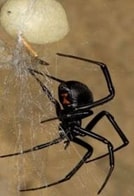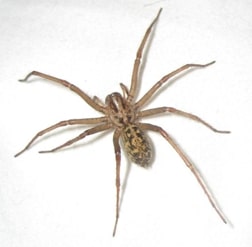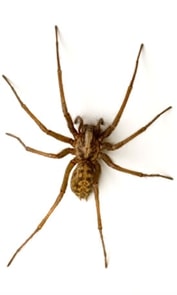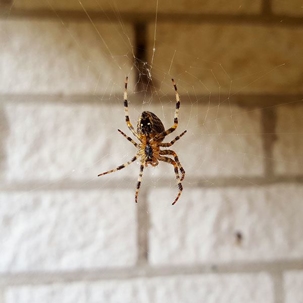Spiders are becoming very active in Thurston County now that fall has arrived, and many homeowners are beginning to notice an increase in their activity. Whether you are vehemently afraid of spiders, or you are impartial towards them, it is good to know a little about the arachnids that will inevitably dwell around your home. Although spiders are disliked and often maligned, they are an integral part of our ecosystem in the Pacific Northwest and provide many benefits.
Spiders feed on many nuisance insects that are prevalent in and around homes, and in turn are eaten by various insectivores. For this reason, many homeowners prefer to allow their presence as a natural part of our environment, and do nothing to hinder their activity, which is ideal. But for those who seek to reduce and limit the population of surrounding spiders, there are preventative measures that exist which can make homes less attractive to them.
- Trim vegetation that is in contact with the exterior of the home
- Eliminate clutter on the interior and exterior
- Regularly clean and remove webs in spider harborage areas
- Maintain control of insects in and around the home
Our regular service program controls insect activity, which in turn lowers spider populations because of their dependence upon insects for food. This treatment will reduce the number of spiders in a given area, but not eliminate them completely, as a project of that magnitude would be inessential. Our service technicians are prepared to offer recommendations and apply integrated pest management measures for spider control at each regular maintenance visit.
Although spiders can be alarming when you find them around the home, they are in most cases benign and are disinterested in being anywhere near a human. That being said, spiders do possess the ability to bite if they are defending themselves, which is why it is a good idea to become familiar with the venomous spiders that reside in Washington. There is the Black Widow spider which is found in eastern Washington, and the Hobo spider which can be found anywhere in the state. Both species typically prefer to live outdoors and cannot survive in an indoor climate.
The Hobo Spider is commonly misidentified with a number of other species that look nearly identical. The subtle differences between the Hobo spider and the species which resemble it can usually only be seen under a microscope. Compare the Hobo Spider with the Giant House Spider in the images below for an example of their close resemblance.
Want to learn more about spider control services? Contact our office at (360) 456-4999 or click here to submit a request for more information.
Black Widow Spider

Hobo Spider

Giant House Spider

Want to learn more about spider control services? Contact our office at (360) 443-5813 or click here to submit a request for more information.

